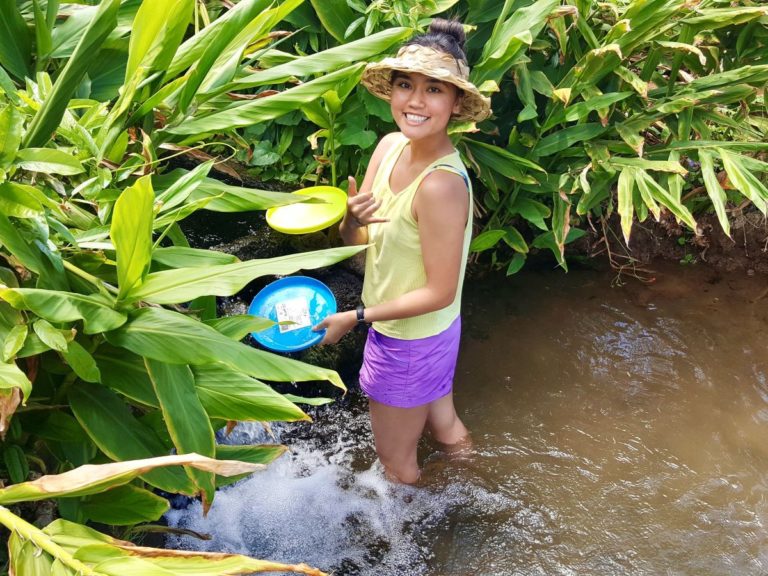

As this year’s Ethnomathematics and STEM Institute continues, we’ve progressed into considering the themes of Community and Laulima.
At last month’s workshop we spent the first part of the day learning about kaula–rope/cordage. We learned how to tie knots such as the kapoline a.k.a. bowline knot–the life-saving knot that doesn’t cinch. If you found yourself knocked overboard and someone threw you a rope, you could wrap the rope around your middle and tie a kapolina, connecting you back to your boat or waʻa.
In the second half of the day we visited UH West Oʻahu’s student garden and entered Hale Kuahuokalā. The hale is built using only rope lashings. Looking at the roof from inside the hale you see an uneven but orderly grid of intersecting beams held together with lashings large and small, each adding strength to the larger structure.

In the morning we also learned about Hawaiian units of measurement such as the kīkoʻo (hypotenuse of the right angle formed by thumb and pointer finger) and the anana–the wingspan or fathom. Many cultures developed similar units of measurement based on the human body. Although everyone’s kīkoʻo, anana, and other measures will be different, they can all be calibrated to the environment and used by the individual. Our guest speaker–an expert hale building–shared that when building a hale, the lead builder might ask for stones that are the size of your poʻo (head) but might also ask specifically for a stone that is someone else’s poʻo–a different size, but just as necessary.

By chance, I was reading recently in a book* that “…whereas Western peoples’ explorations of technology took an outward direction, indigenous peoples’ prioritizing of ‘inner technologies’ enabled the advancement of particular ways of knowing centered around the interconnections between the molecules of existence and the nature of the energy that binds them.”
Of course, indigenous peoples created outward technologies too. But during the workshop, as we tied knots, helped plant huli, learned about traditional hale building, and measured out the houses of the star compass using our own hands, I was thinking about inner technologies, and specifically technologies of community.
How do we teach these technologies of community in the computer science classroom? How do we bring ideas about community that are encapsulated in the metaphors of kaula and aho (lashing) into tech industry conversations about things like collaboration technology or the “designer-developer divide” or open data? How do we encourage students to discover their own unique way to fit into their communities, including the tech community? How do we educate community-oriented tech developers?
Open questions that I’m still thinking about. Excited for the next ethnomath workshop. Stay tuned.
* The New Imperial Order; Indigenous Responses to Globalization by Makere Stewart-Harawira, page 39.